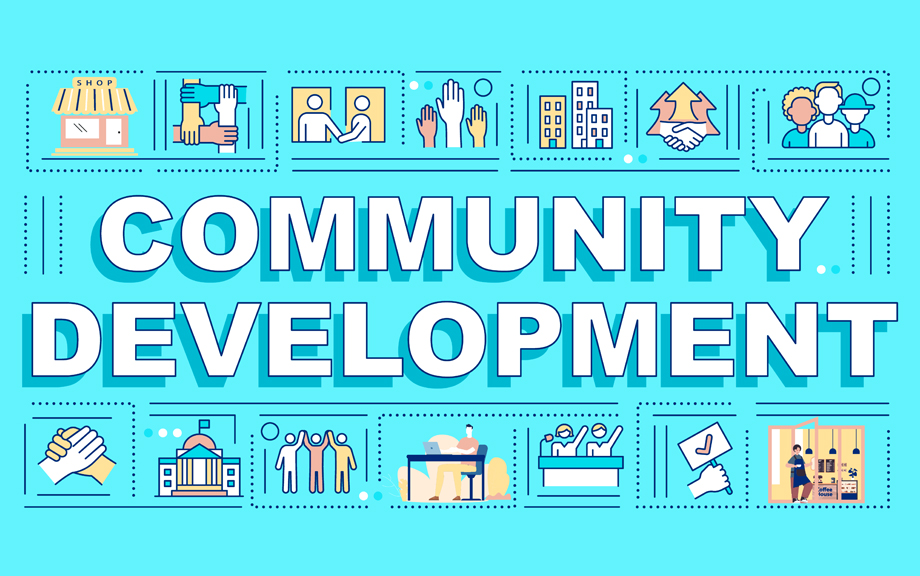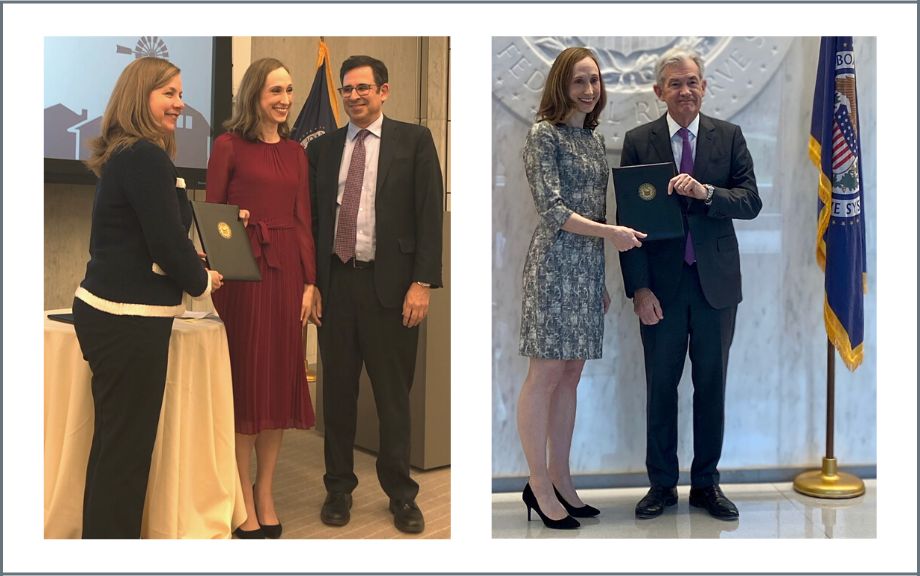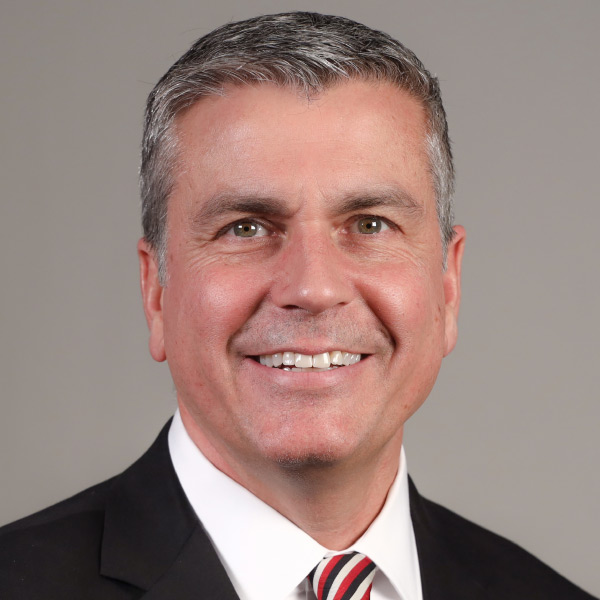
Low- and moderate-income people face intertwined economic challenges. A family unable to replace drafty windows may pay a higher heating bill each month, making paying other bills more difficult. Small business owners who lack access to loans may be unable to hire new workers, making local jobs harder to find.
One group within the Federal Reserve System is charged with studying, understanding, and identifying solutions to that constellation of challenges: The Community Development teams at each of the 12 regional Federal Reserve Banks and the Board of Governors in Washington, D.C. The units were launched in the early 1980s to support the implementation of the Community Reinvestment Act (CRA), a federal law passed in 1977 following revelations about bank redlining and racial discrimination in home lending. The law requires the Federal Reserve and other federal banking regulators to encourage financial institutions to help meet the credit needs of the communities in which they do business, including low- and moderate-income neighborhoods.
To understand what those needs are, the Community Development teams serve as a hub for community development thinkers and people working to improve their communities, listening to people from rural areas to city neighborhoods. They host information-gathering roundtables, public events, and conduct research on the economic conditions of low- and moderate-income communities.
A notable example of Community Development’s work is the creation and administration of the nation’s Small Business Credit Survey, for which two community development staff were recognized last month. Claire Kramer Mills, director of community development analysis at the New York Fed, and Ann Marie Wiersch, community development policy advisor with the Cleveland Fed, were recognized within the Federal Reserve System for their leadership of the annual survey.
The survey of small businesses’ access to credit began after the 2008 financial crisis. Ben Bernanke, the Fed Chair at the time, called upon Community Development teams to gather detailed insights on the concerns that Fed policymakers were hearing about how tighter credit standards were making loans inaccessible to small businesses. The Community Development teams followed up with 40 listening sessions around the country, where they heard small business owners’ experiences.
At one of those meetings, Kramer Mills asked what data New York City’s Department of Consumer Affairs, which registers many of the city’s small businesses, and the city’s Department of Small Business Services had about loan applications and demand. The answer was that there was a lack of data, nationally, about demand for loans from small businesses.
In 2011, she and the New York Fed Community Development team, in partnership with New York City’s departments of Consumer Affairs and Small Business Services, led a successful pilot survey of small businesses. Positive feedback from service providers and lenders prompted the New York Fed to launch an annual survey in 2012. Later, several other Reserve Banks began to conduct regional surveys of business owners in their districts to gather information on credit experiences. For example, in 2013, the Cleveland Fed conducted a survey of small business owners in the Fourth Federal Reserve District.
In 2014, the Atlanta, Cleveland, New York, and Philadelphia Reserve Banks collaborated for the first time on a joint survey, led by New York, which gathered more than 2,000 responses from firms in 10 states. The usefulness of the information prompted more Regional Federal Reserve Banks to join, and, by 2016, all 12 Regional Federal Reserve Banks jointly fielded the survey.
“At its heart, the survey is an intelligence tool,” Kramer Mills said. “It captures the voice of thousands of small businesses and conveys their experiences to the people who make monetary policy.”

As the survey developed, Kramer Mills and Wiersch worked with other Reserve Bank staff and the Federal Reserve Board of Governors to establish it as a unique dataset, making information and trend analyses about small businesses available across economic cycles. Wiersch and Kramer Mills also worked closely with other Federal Reserve System staff to propose a dedicated staffing model to sustain the survey and strengthen business partnerships. The Cleveland Fed assumed leadership of the Small Business Credit Survey in March 2020 on behalf of the Federal Reserve System, with Wiersch supporting the new leadership team in deploying the survey and Kramer Mills serving as an advisor.
“It is a privilege to work on an initiative that has so much impact, helping policymakers, industry leaders, and service providers to better understand small business conditions,” Wiersch said. “Every year, I take time to read through comments in the survey from business owners—relaying their struggles and their hopes for the future. Their stories are a good reminder of the diverse array of people, businesses, and communities that underlie our numbers.”
The data provided by the survey has proved especially vital in taking the pulse of small business amid newly emerging economic and financial developments. Using data gathered during the spring of 2020 Kramer Mills and a co-author found the number of Black-owned small businesses fell 41%, Latinx small business ownership dropped by 32% and Asian ownership by 26%, while the number of white businesses slid by 17%. Their report, “Double Jeopardy: COVID-19’s Concentrated Health and Wealth Effects in Black Communities,” made national news and was used by Congress and the Treasury Department in making pandemic policy. Earlier, the Cleveland Fed report “Click, Submit 2.0” used SBCS data to shed light on the types of small firms turning to online lenders, revealing more insight into application experiences and credit outcomes. That report was cited in a congressional hearing and the Fed’s semi-annual report to Congress.
Policymakers considered data from the survey when they modified the Paycheck Protection Program, a program that enabled millions of small businesses to keep their workers employed during the COVID-19 shutdowns. The survey also provided useful data about credit access for small businesses to federal banking agencies as they considered modifications to Community Reinvestment Act regulations. Survey data has continued to help policymakers adapt to the uncertain economic and financial environment, delivering fresh insights about the COVID-19 pandemic’s continuing impact on small businesses, including workforce challenges, business performance, and credit conditions.
For their work on the survey, Kramer Mills and Wiersch shared the Federal Reserve System’s 2022 Janet L. Yellen Award for Excellence in Community Development, awarded last month.
The award, which recognizes individuals who have demonstrated superior leadership, achievement, and contributions in fulfilling the Federal Reserve System’s community development mission and responsibilities, honors Dr. Janet L. Yellen, who has been dedicated to supporting community economic development research and policy throughout her career. Yellen, who was the first woman to serve as chair of the Board of Governors of the Federal Reserve System, is currently Treasury Secretary, also the first woman to hold that post.
Cleveland Fed President Loretta J. Mester, speaking at the awards ceremony, noted the importance of collaboration among the Reserve Banks, businesses, and civic organizations across the nation in making the Small Business Credit Survey a valuable source of data.
“This collaboration allows the survey to collect responses from small businesses throughout the country. And this makes it a better tool for understanding the financing and debt conditions of small businesses, which play a very important part in our economy,” Mester said.
For more information about the Small Business Credit Survey, see fedsmallbusiness.org. Learn more about how your small business or organization can become a partner. For more information on the Federal Reserve System’s community development departments and their work, see fedcommunities.org.

David Erickson is the New York Fed’s Head of Outreach and Education.
Emily Garr Pacetti is the Cleveland Fed’s Community Affairs Officer, overseeing the Bank’s Community Development group.
The views expressed in this article are those of the contributing authors and do not necessarily reflect the position of the New York Fed or the Federal Reserve System.










